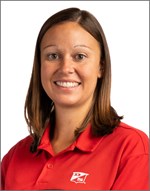Unusual Fall Colors; Using 2021 Data to Determine 2022 Product Needs
BY Dairyland Seed Agronomy Team
SAPROPHYTIC FUNGUS
As combines roll through corn, it has been noted that dark clouds resembling smoke have been following combines across the field.
These dark clouds of dust are spores from various forms of saprophytic fungi, which are fungi that grow on dead and decaying plant tissue. The extended periods of warm and humid conditions have allowed these fungi to proliferate. The colonies of these fungi cause the fodder and stalks of already harvested fields to appear gray or black, and aid in the decay of stalks and fodder.
Saprophytic fungi are not known to cause quality or toxin issues in grain. Even if husks show signs of infection, the corn grain usually remains untouched.
The cloud of spores created by the combine can irritate respiratory issues and regular cleaning of cab and engine filters is recommended as the spores can plug these filters.
If you have any questions about saprophytic fungus or have any other observations while harvesting contact your Dairyland Seed DSM or Regional Agronomist.
WHY IS MY NEIGHBOR’S FIELD SO GREEN?
With the unique fall harvest this year, we are asked the question of why the neighbor’s field is “sooo green”.

First, we are all aware of the rather late frost and warm fall to this point. Some areas were harvested a few weeks earlier than normal. Fields harvested early, coupled with late season rains and warm temps sound like ideal germination conditions.
The real question comes in with “why so much green?”. Are my “neighbors” poor farmers?
- One reason is extra dry beans (i.e. 9-10 percent) and corn across the Midwest with wind and stalk damage. As a result, we had more field loss than desired.
- Let’s do some math for other situations. We discussed harvest loss in a previous Dairyland Seed agronomy news flash. Let’s use soybean as an example. Assume we are at 1.5 percent yield loss and our yield was 65 bu/A. That equates to just shy of 1 bu/A. We will say there are 2800 seeds per pound this fall and 60 pounds per bushel (60# X 2,800 seeds = 168,000 seeds). Thinking back to spring, our seeding rates were 140 to 180K depending on our planting system which is the reason, to the eye, it looks like the fields were reseeded.
- Now for fun run your own numbers for 200, 250 or 275-bushel corn. The bottom line is it looks bad; but in reality, your “neighbor” is doing a better job than you think.
PRODUCT SELECTION
As harvest gets close to wrapping up, many producers are considering what products to grow next year. There is an abundance of product performance information rolling in daily which can quickly become overwhelming to sort through. Here are some things to consider while you interpretate yield data and make decisions for the 2022 growing season.
- Multi-year and multi-location data are more valuable than single year or single location data. Just be sure your multi-location data is coming from local and regional areas with a similar environment.
- Consistency is key! Pay attention to products that are consistently showing up in the top third of plots. This shows the product can maintain yield under various growing conditions. Since we can’t accurately predict growing conditions of the 2022 season, it is important to include a product that successfully performs across different environments.
- Look at third party plots along with company plots. Third party plots (university trials, FIRST trials, etc.) are often good sources of information to use along with company data. Pay attention to the number of replications and realize the data may not be balanced. Also, look for products used as checks or benchmark products to help draw conclusions. You may see statistical terms like CV and LSD listed for the trial results.
- Coefficient of Variance (CV): the ratio of the standard deviation to the trial mean. The standard deviation is the dispersion of data points around the mean. Higher CV indicates more variation.
- Least significant difference (LSD): the minimum difference between products that is required for them to be significantly different. If one product yielded 10bu better than another but the LSD was 12, then those products are not significantly different.
- Disease ratings and agronomic ratings of the products should also be considered. Products with higher disease tolerance will help reduce the risk of losing yield if the disease ramps up. You should also consider agronomic ratings for things like emergence and standability.
If you have any questions please reach out to your local DSM or Agronomist.
PRODUCT AND AGRONOMIC RESEARCH PLOTS
As your harvest has progressed, so has harvest of our Dairyland Seed research projects. We conduct agronomic research throughout our marketing area.
We have several sites with more intense and detailed programs. Those include Wabash, IN; Decker, MI, St. Johns, MI, and Mt. Hope, WI. Projects this year looked at soybean planting dates, starter fertilizer, corn harvest date, fungicide for corn, seed treatments and more.
Watch our newsletter and announcements for complete results and detailed discussion of our findings.
JOIN THE DAIRYLAND SEED ELITE PRODUCER CLUB
You can be a member of Dairyland Seed’s Elite Producer Club by submitting photos or testimonials of high performing products! Simply test a picture or testimonial of your high performing products to 913-DS-YIELD or 913-379-4353. The program runs from August 15 through December 1, 2021.
Participants will receive a free Dairyland Seed t-shirt (one per entry) and “Elite Yield Club” Certificate. All corn grain, corn silage and soybean products are eligible.
Qualifying products for “Elite Yield” Contest (one winner per family, per region, prize is 3 free units of product that was entered):
Region 1 = DS-3366 family; DS-3550 family; DS-4018 family
Region 2 = DS-3550 family; DS-4018 family; DS-4878 family; DS-5144Q
Region 3 = DS-4310 family; DS-4878 family; DS-5144Q
Region 4 = DS-3366 family; DS-3550 family; DS-4014Q; DS-4310 family
Information required in text: Participant; Location; Product; Yield in Bushels or Tons; T-Shirt Size; DSM; Mailing address if different than participant.
2021 YIELDMASTER CONTEST
Fall harvest kicks off the annual Dairyland Seed Corn, Silage and Soybean Yieldmaster Contest. Take a moment to enter your outstanding yields and you just might be our 2021 winner!
Seed Credits for Winners
- The National Corn, Soybean and Silage Yieldmasters will each receive a $2500 seed credit.
- First Place Corn, Silage and Soybean winners from each zone receive a $1000 seed credit.
- Second Place Corn, Silage and Soybean winners from each zone receive a $500 seed credit.
Entries can be submitted online at www.dairylandseed.com or via your DSM who can submit your entry using the iPad app. Silage entries are due November 3, 2021. Corn and Soybean entries are due December 3, 2021.
 |
 |
 |
 |
 |
| Brian Weller Western Region 507.456.3034 |
Dan Ritter Central Region 219.863.0583 |
Branden Furseth Northern Region 608.513.4265 |
Mark Gibson Eastern Region 260.330.8968 |
Amanda Goffnett Eastern Region 989.400.3793 |
